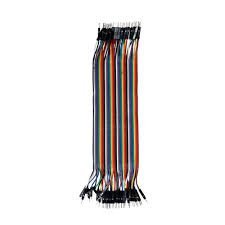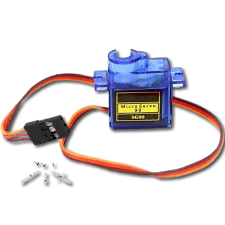No products in the cart.
Transformer's
Current Transformer
Availability:
5 in stock
A Current Transformer (CT) measures high AC currents by converting them into a lower, manageable value. It features a core with windings that generate a proportional secondary current, essential for accurate measurement and protection in power systems. CTs are crucial for safety, monitoring, and efficient operation in electrical circuits.
₹87.32 ₹177.00 (Incl. GST)
5 in stock
Current Transformer
A Current Transformer (CT) is a vital component in electrical power systems, designed to measure alternating current (AC) in high-voltage circuits by stepping down the current to a lower, manageable value. This allows for safe and accurate measurement and monitoring of the electrical current flowing through a system without directly interfacing with the high-voltage line. CTs are widely used in power distribution, metering, and protective relaying applications, playing a crucial role in ensuring the safety and efficiency of electrical networks.
Key Features
- Current Measurement: The primary function of a CT is to measure AC current. It works by producing a secondary current that is proportional to the primary current flowing through its main conductor. The secondary current is a reduced version of the primary current, typically in a much smaller range, making it suitable for measurement and monitoring.
- Safety and Isolation: One of the critical advantages of using a CT is the electrical isolation it provides between the high-voltage circuit and the measuring instruments. This isolation ensures the safety of the equipment and personnel, preventing direct exposure to high voltage.
- High Accuracy: Current Transformers are designed to offer high accuracy in current measurement, which is essential for precise metering and monitoring in power systems. This accuracy helps in effective energy management, billing, and maintaining the stability of the power grid.
- Variety of Ratios: CTs are available in various current ratios, such as 1000:1 or 500:5, depending on the application. The ratio indicates the relationship between the primary current (high current) and the secondary current (reduced current). This flexibility allows CTs to be used in different systems with varying current levels.
- Compact Design: Despite their crucial role, CTs are compact and can be easily integrated into electrical panels and systems. Their small size makes them suitable for both retrofitting in existing systems and use in new installations.
- Durability and Longevity: CTs are built to withstand harsh electrical environments. They are made from robust materials that can endure high temperatures, mechanical stress, and electrical overloads, ensuring long-term reliability and performance.
Applications
- Power Distribution and Transmission: CTs are extensively used in power distribution networks to monitor and control the flow of current. By accurately measuring current, they help in maintaining the stability and efficiency of the power grid.
- Energy Metering: In energy metering, CTs are used to measure the amount of electricity consumed by a facility. They step down the high current from the power lines to a lower value that can be safely measured by energy meters, ensuring accurate billing and energy management.
- Protective Relaying: CTs play a critical role in protective relaying systems. They provide the necessary current measurements for relays to detect abnormal conditions such as overloads, short circuits, or ground faults, triggering protective actions like circuit breaker operation to prevent damage to the electrical system.
- Industrial Applications: In industrial settings, CTs are used to monitor and control the current in various electrical equipment and machinery. This helps in ensuring efficient operation, preventing overheating, and avoiding equipment damage.
- Load Monitoring: CTs are employed in load monitoring systems to measure the current drawn by different loads. This data is used to optimize power usage, improve energy efficiency, and prevent overloading in power distribution systems.
- Testing and Calibration: CTs are also used in laboratories and testing facilities for calibrating other instruments and devices. Their accurate current measurement capabilities make them ideal for testing electrical components and systems.
Benefits
- Enhanced Safety: By providing electrical isolation between the high-voltage circuit and the measurement instruments, CTs enhance the safety of both the system and the operators.
- Improved System Monitoring: CTs enable precise monitoring of current flow, which is crucial for maintaining the efficiency and stability of power systems. This monitoring helps in identifying potential issues early, allowing for timely intervention.
- Cost-Effective: The use of CTs in energy metering and load monitoring can lead to cost savings by improving energy efficiency and preventing costly damage to electrical equipment.
- Versatility: CTs are versatile and can be used in a wide range of applications, from small-scale industrial systems to large power distribution networks.
- Durable and Reliable: Built to last, CTs provide long-term reliability, ensuring consistent performance even in demanding environments.
Conclusion
A Current Transformer is an indispensable component in modern electrical power systems, offering a safe, accurate, and reliable means of measuring AC current. Its ability to step down high currents to lower, manageable levels makes it essential for metering, monitoring, and protection applications. Whether used in power distribution, industrial machinery, or energy metering, CTs play a key role in ensuring the efficient and safe operation of electrical networks, making them a crucial part of any electrical engineering solution.
| Weight | 0.00 kg |
|---|---|
| Dimensions | 0.00 × 0.00 × 0.00 cm |






There are no reviews yet.